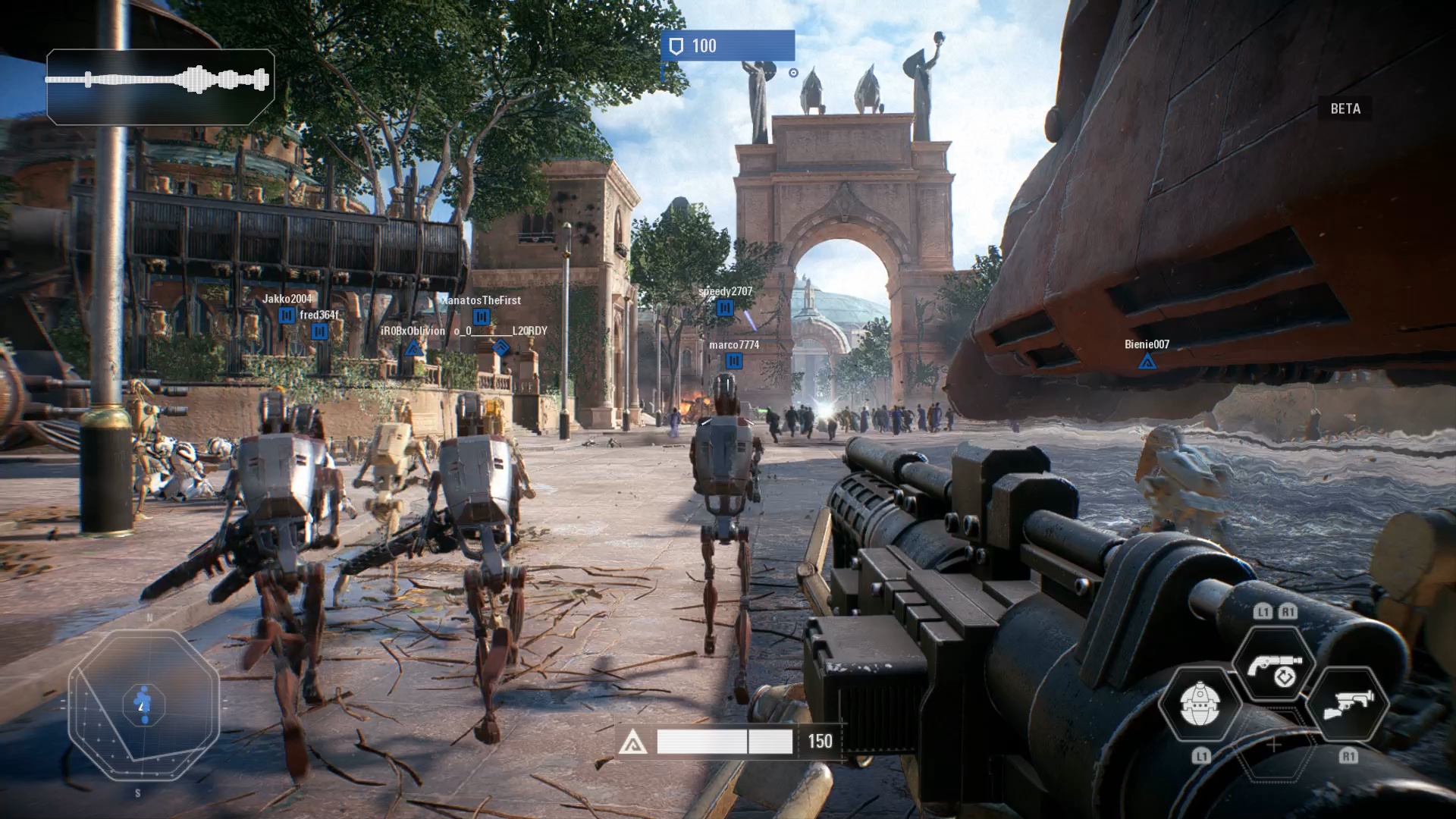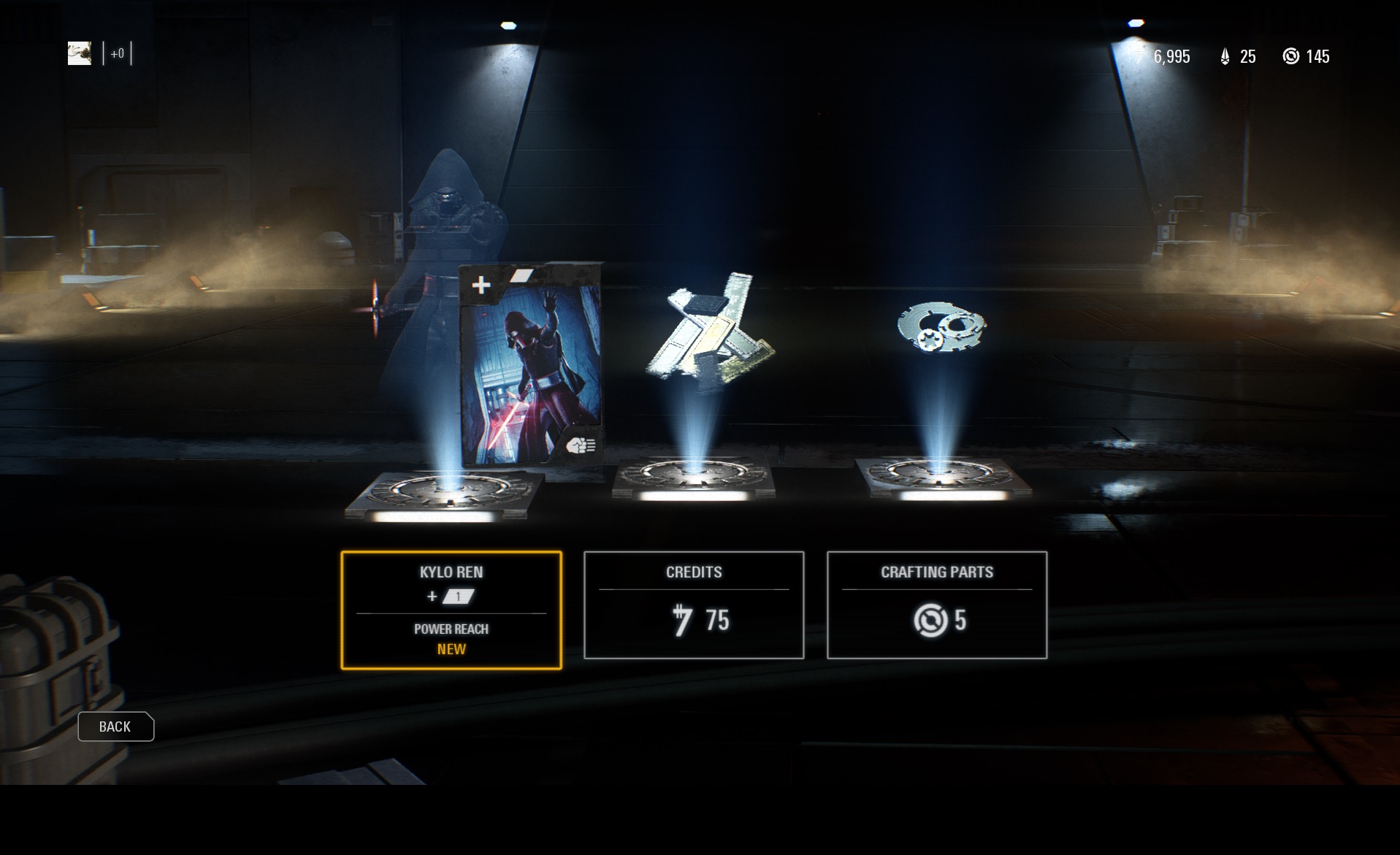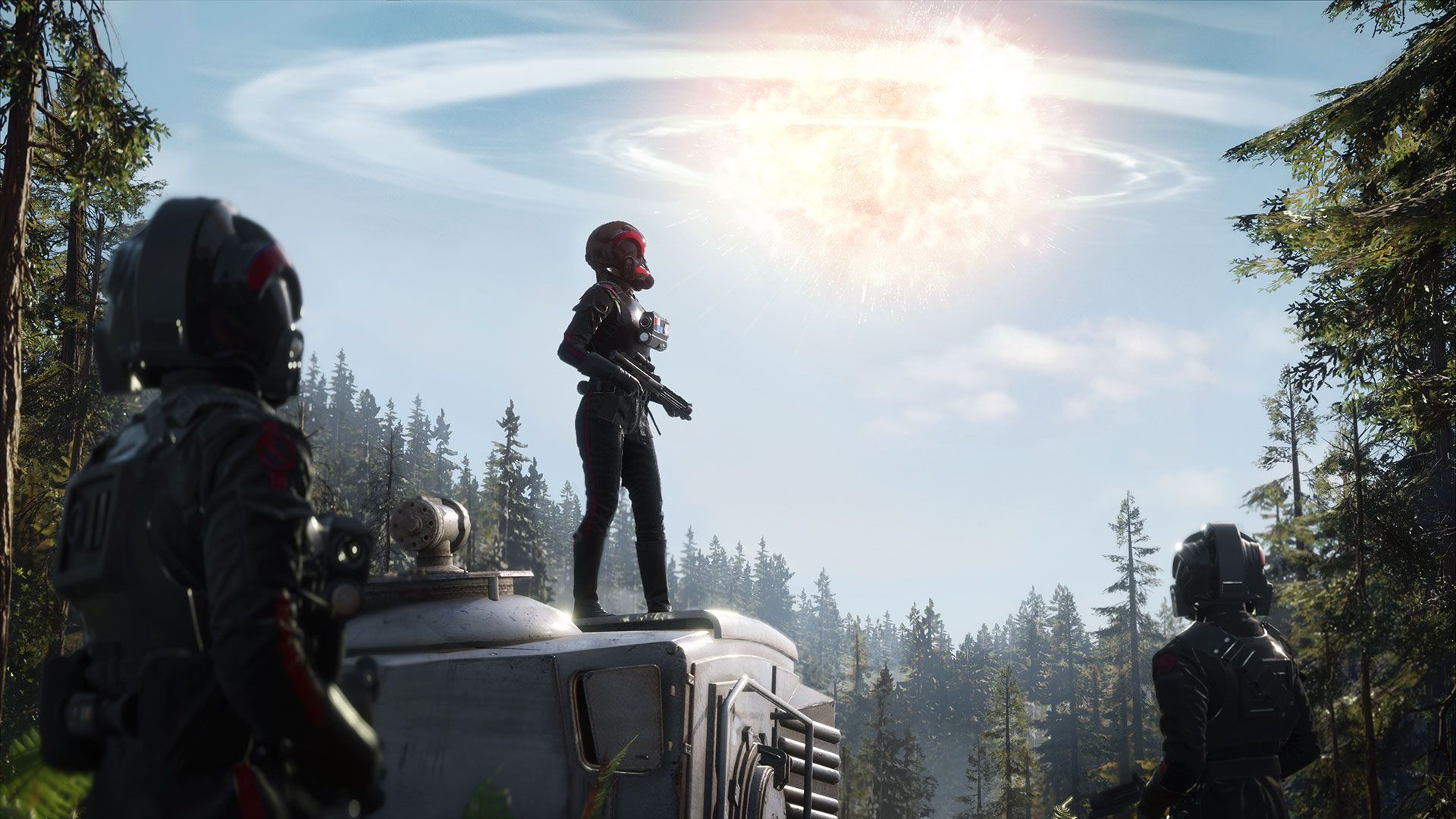‘Star Wars Battlefront II’ Is Everything That’s Wrong With Big Budget Games
Credit to Author: Matthew Gault| Date: Tue, 14 Nov 2017 16:50:08 +0000
Star Wars Battlefront II is arguably the biggest entertainment product that will come out this year. It’s one of the biggest video games to come out of the biggest video game publisher, Electronic Arts. It’s based on the biggest movie franchise in the world, Star Wars, which is produced by one of the biggest media companies in the world, Disney.
With so much attention and money riding on it, it’s sad but not entirely surprising that Battlefront II is kind of a mess. It’s technically competent. Swedish developer DICE makes some of the best looking, best sounding games out there, and Battlefront II is no exception. So far, its servers have withstood the load of beta tests and early access players.
But it’s a game that feels more like it’s trying to avoid making huge mistakes than testing new ideas. It’s a perfect example of everything that’s wrong with big budget video games today: Battlefront II is safe, boring, and seemingly exists only to justify what it cost to produce. This is evident both in how badly it bungles telling a story that attempts to connect the original trilogy with the new one, and its aggressive loot box monetization model, which has already awarded it the most downvoted comment in Reddit’s history.
Let’s start with its single player campaign. Battlefront II, which is set in the time period between Return of the Jedi and The Force Awakens, tells the story of Inferno Squad—an Imperial special operations unit—led by competent hard-ass Iden Versio. In the story’s opening moments, Versio and her squad are holding off rebels on Endor when the Death Star suddenly explodes above them.
It’s a promising setup for a colossal letdown. That moment—watching the destruction of a superweapon alongside the bad guys—is the high point of the five-hour campaign. The rest of the story feels underdeveloped and tacked on—an afterthought meant to appease the fans, which complained that the last Battlefront was multiplayer only.
Most of the campaign’s maps are recycled from the multiplayer mode and padded out with segments where the player takes control of characters like Luke Skywalker or Lando Calrissian. It’s beautiful, dumb, and brief.
It’s especially disappointing because the writers of Battlefront II were given a juicy period of time to play with. It attempts to fill some of the gaps between the original trilogy that ended with Return of the Jedi and the new trilogy that started with The Force Awakens. That’s exciting given that Disney and Lucasfilm made a big deal out of dumping a bunch of the Star Wars lore that accumulated over decades of books, comics, and video games. To be fair, a lot of that lore was trash (did you know that Thakwaash horse people were once canon?), so it made sense to start fresh with a new trilogy, and keep the lore bible close to the chest going forward.
Surely, if EA was given the keys to the Star Wars universe, it’d have to do something not stupid with it, right?
Cut to the Battlefront II level in which Luke Skywalker is on the coral reef-like planet of Pillio, flailing wildly at annoying alien spiders while helping some side character get into a secret vault of the late Emperor Palpatine’s stuff. It’s goofy and dumb, more suited to a bad made-for-TV movie than an official Star Wars tie in.
Palpatine’s secret cave is the Star Wars Holiday Special of Battlefront II. It looks like the Luke you know and love, but suddenly he’s bouncing off the walls like a Beyblade and talking to goofy characters you’ve never heard of. Keep this in mind when you watch Luke on screen in The Last Jedi this Christmas: At some point he spent about 20 minutes flailing wildly at a bunch of spiders in a cave so he could steal a compass he didn’t know he wanted. This is canon now.
We wish we could tell you why Luke was there, but we can’t because Battlefront II doesn’t make that clear. This is true about pretty much every important moment in the story, which spans many years, planets, and characters, without ever explaining what anyone is doing or their motivations. You’ll play as Lando as he runs away from lava and Han Solo as he hangs out in a bar looking for a guy with a beard (this is as exciting as it sounds), but you won’t know why. Remember how there are all those crashed Star Destroyers on the surface of Jakku in the opening scenes of The Force Awakens? Battlefront II lets you take part in that battle, but gives no context for why it took place.
Clearly, Battlefront II is relying on players to have information that’s in the upcoming movie, or perhaps its novelization, but as a standalone story it is incoherent to point of absurdity and so far the most embarrassing cog in the Star Wars machine as reborn under Disney.

Of course, like everything in Battlefront II, the story exists only to check boxes. Most importantly, it teaches players how to use the multiplayer hero classes but fails to tell players they can’t actually play with them right away. Unless a player is lucky or invests real money in the game’s loot boxes, it’ll be some time before they can grab the reins of Luke or Vader. In each match, players can only play as the heroes after they’ve earned a certain number of points by playing the objectives and killing the enemy.
Rey, for example, unlocks after the player hits 8,000 points, Luke at 6,000. Once the player hits that score they can spend their in-game points to play as those heroes. They’re powerful characters that can turn the tide of battle and are fun to play, but good luck hitting those scores without some upgrades.
Which brings us to Battlefront II‘ s main problem—its economy.
DICE is good at developing large-scale multiplayer shooters, and at its core, Battlefront II is another one of those. It’s not as good as DICE’s Battlefield games because it’s trying appeal to a broader audience. In simplifying that formula, it loses so much of the chaos that makes it unique. Still, Battlefront II has solid fundamentals. You click the mouse and the laser goes “pew pew” and that feels good. When a bunch of Storm Troopers rush a hill together and take it, it feels well balanced and satisfying.
But even what good is here is overshadowed by the loot box-driven progression system. It’s relentless. As soon as you launch the game, it will entice you to open some loot boxes with a notification on the main menu.
Here’s how it works as of this writing. As players kill their friends on Hoth, they unlock cards that make them more powerful. Most of these cards come out of randomized loot boxes and the best way to get loot boxes is to buy them with one of the game’s two currencies. The first is credits, earned by finishing off challenges in the game and by competing in multiplayer. The second is crystals, which players get by purchasing them for real money. Confused yet? It gets worse.

The high level cards change the game so much that playing against them makes it hard to collect the kills you need to level up, earn crates, and craft better gear. During my time in the Galactic Conquest mode, I was continually dominated by better geared players. I know they were better geared because the game shows you the gear of your killer when you die. Nothing says fun like dying to the same player with the epic thermite grenade every time you spawn.
That said, the highest level cards don’t drop from loot boxes, but the pieces you use to craft them do. Want to catch up? It’s as easy as dumping a few extra bucks on crystals and hoping you get the right cards or card components from loot boxes.
As we were writing this review, EA reached out to tell Motherboard that it’s tweaking its progression systems to make them more fair and balanced. For starters, it reduced the amount of credits it takes to unlock some of the heroes—such as Luke and Darth Vader—by 75 percent. (Note: this just unlocks the possibility to play them. Players still have to earn enough points per match to select them, as described above.) It also promised to listen to players and tweak things further after the game launched.
But it’s hard to imagine DICE and EA will ever satisfy its player base. Battlefront II is a game designed to make you buy loot boxes. There’s no way around it because it’s woven into its DNA.
To be clear, we are in no way anti-big budget video games. To the contrary. We’ve previously written in depth about how only big companies making big games can make the kind of investments that advance both the medium of video games and the field of computer science.

To be fair to EA and DICE, they arrived at this bleak, Candy Crush version of a Star Wars game with the help of their audience.
There’s a phoned-in story mode because players were mad that the last game didn’t have one. There’s an overabundance of stuff to unlock because players complained that the previous game didn’t have enough stuff to unlock. The amount of stuff in Battlefront II compared to Battlefront was such a point of pride for EA it made chart showing this to promote the game.
Notice that despite all the anger around its loot box system, players are not exactly rejecting Battlefront II‘s progression system wholesale. Players are saying it takes too long to get specific items, not that they don’t want them, or that they don’t want to put in some kind of effort towards unlocking them.
Essentially, EA and its players are currently haggling over how to tweak the knobs that make our brains release dopamine when a virtual crate unlocks, and EA has been open and responsive. It’s safe to assume that eventually it will tweak the knobs the right way.
But we’re going to keep arguing and buying loot boxes for another decade unless big budget video games and players make more serious changes. Players will have to stop buying these games. Publishers will have to find a different way to fund their biggest projects. Until then, this is what big budget Star Wars games will look like.